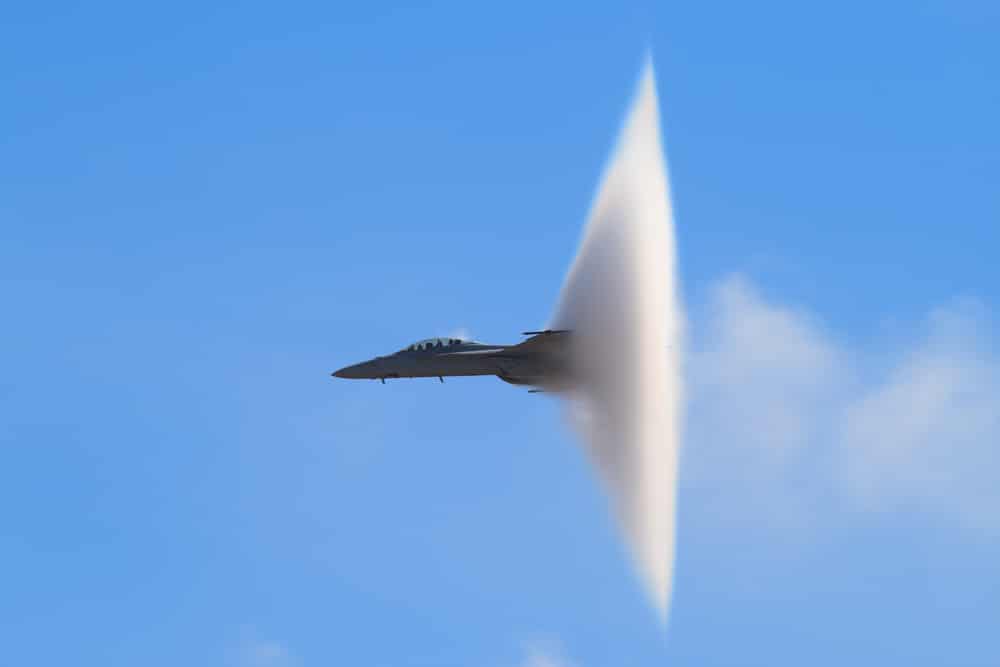
"Following a detonation or explosion heard over the whole of the department 5 minutes ago, it is a plane which crossed the sound barrier over Paris." The National Police of the Essone, a Paris suburb, also confirmed the sudden noise. The sound was even heard at the Roland Garros stadium, which lies outside the city center, interrupting play there of the French Open. It is about a fighter plane that crossed the sound barrier," read a statement issued by the prefecture of police. "A very important noise was heard in Paris and in the Paris region. The aircraft was definitely already supersonic, as you can’t hear it coming.A loud boom was heard Wednesday afternoon over the city of Paris and its suburbs when a fighter jet crossed the sound barrier, police said. You can clearly watch the pressure wave hit her hair while she’s speaking. Since they are usually similar in strength and the time interval between the two is little, they can (or cannot) be perceived as double booms. This is because all aircraft generate two cones, at the nose and the tail of the aircraft. In fact, while some people on the ground may perceive the sound as a single sonic “boom,” many sonic booms are heard as distinct “double” booms. It sounded like two M-80 “barrel bombs” exploding a few feet in front of us,” Steve says in the video description on Youtube. The F-16 was very close, perhaps 400 feet from the camera, so there was no mistaking that there was two explosions and shock waves, especially in person.

“Aircraft traversing through the sound barrier create two sonic booms, one at the nose of the aircraft and one at the tail, but generally they are heard as one. Since you can hear the noise of the jet as it was approaching and then the quite unmistakeable sonic boom, it seems quite evident that Steve Kauzlarich, the author of the video, managed to film the F-16 as it accelerated through Mach 1. It is the rate of change, the sudden changing of the pressure, which makes the sonic boom audible.”Īctually, the “sonic boom” has nothing to do with the sound barrier (and there’s no “barrier” at all either): it can be heard when the aircraft is ALREADY flying at supersonic speed not far from our ears.īack to Oshkosh, the clip here below shows the high speed pass. The change in air pressure associated with a sonic boom is only a few pounds per square foot - about the same pressure change experienced riding an elevator down two or three floors. The sharp release of pressure, after the buildup by the shock wave, is heard as the sonic boom.
#JET BREAKING SOUND BARRIER FULL#
As this cone spreads across the landscape along the flight path, it creates a continuous sonic boom along the full width of the cone’s base. Here’s how NASA describes the phenomenon: “The shock wave forms a “cone” of pressurized or built-up air molecules, which move outward and rearward in all directions and extend all the way to the ground. The shock, due to the quick “jump” from a low pressure / low temperature / supersonic airflow zone to a high pressure / high temperature / subsonic speed zone that is perceived by the human brain as a loud “bang”. Eventually they merge into a single shock wave, which travels at the speed of sound. These waves travel at the speed of sound. As the speed of the aircraft increases, the waves are forced together, or compressed, because they cannot get out of the way of each other.


#JET BREAKING SOUND BARRIER SERIES#
In fact, when an aircraft passes through the air it creates a series of pressure waves around it similar to the bow and stern waves created by a boat on the water. As already explained multiple times here at The Aviationist, the characteristic loud bang or “ sonic boom“ is the sound associated with the shock waves created by an object traveling through the air faster than the speed of sound.


 0 kommentar(er)
0 kommentar(er)
